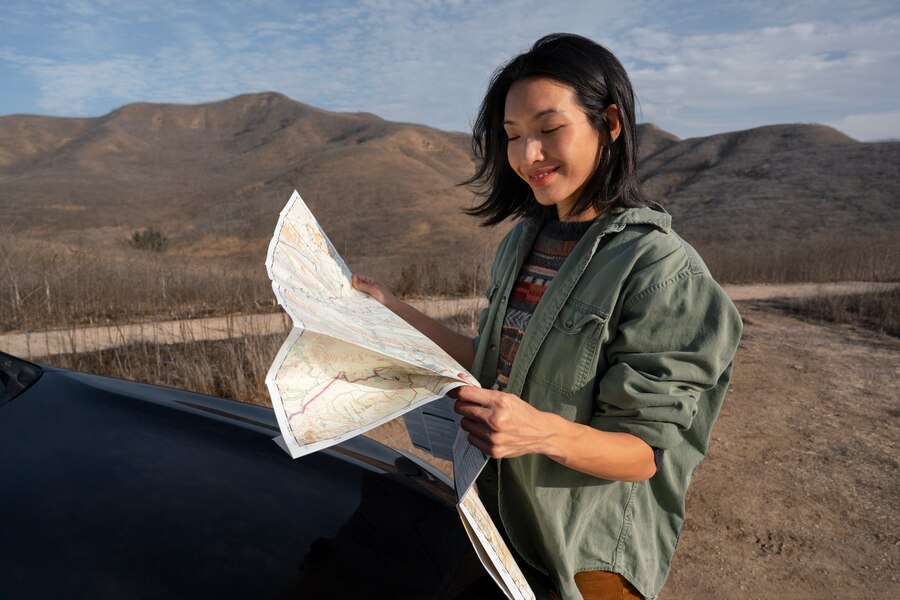Embarking on a road trip is one of the most exhilarating ways to explore new destinations, create lasting memories, and enjoy the freedom of the open road. Whether you’re planning a weekend getaway or a cross-country adventure, proper preparation can make all the difference in ensuring an epic journey. This ultimate guide covers everything you need to know about planning and executing a successful road trip.
Planning Your Road Trip
1. Choose Your Destination

The first step in planning your road trip is selecting your destination. Consider what type of experience you want—are you looking for scenic views, cultural experiences, or outdoor adventures? Research potential locations and decide whether you want to visit multiple cities or focus on one area.
2. Map Out Your Route
Once you have a destination in mind, it’s time to map out your route. Use tools like Google Maps to find the most efficient path, but don’t hesitate to include scenic detours that might add extra time but offer breathtaking views and unique attractions. Make note of interesting stops along the way, such as national parks, historical landmarks, or quirky roadside attractions.
3. Plan Your Stops
Decide how often you want to stop for breaks, meals, and sightseeing. A good rule of thumb is to take a break every two hours to stretch your legs and refresh. Consider pre-booking accommodations if your journey spans multiple days, ensuring you have a comfortable place to rest each night.
Preparing for Your Road Trip
4. Vehicle Preparation
Before hitting the road, ensure your vehicle is in top condition. Schedule a maintenance check that includes oil changes, tire inspections, and brake assessments. Check fluid levels and ensure that your spare tire and emergency kit are readily accessible.
5. Packing Essentials
Packing smartly is crucial for a successful road trip. Here’s a checklist of essentials:
- Documents: Driver’s license, vehicle registration, insurance information.
- Navigation Tools: GPS device or smartphone with offline maps downloaded.
- Snacks and Drinks: Non-perishable snacks like granola bars, nuts, and plenty of water.
- Comfort Items: Sunglasses, sunscreen, pillows for comfort during long drives.
- First Aid Kit: Include band-aids, pain relievers, and any personal medications.
- Clothing: Pack according to the weather at your destination; layers are ideal for changing climates.
6. Budgeting for Your Trip
Determine your budget before you leave. Consider expenses such as fuel costs, accommodation, food, activities, and any unexpected costs that may arise. Having a clear budget helps you manage expenses effectively during your journey.
During Your Road Trip
7. Stay Flexible
While having a plan is essential, flexibility is key during road trips. Be open to spontaneous detours or changes in plans based on weather conditions or newfound attractions along your route.
8. Enjoy the Journey
Remember that a road trip is about the journey as much as the destination. Take time to enjoy scenic views, engage with locals at roadside diners, and explore hidden gems along the way.
9. Safety First
Prioritize safety by ensuring everyone wears seatbelts and taking regular breaks to avoid fatigue. Keep hand sanitizer or disinfecting wipes handy for hygiene during stops.
Conclusion
Road trips offer an unparalleled opportunity to explore new places at your own pace while creating unforgettable memories along the way. By carefully planning your route, preparing your vehicle, packing wisely, and remaining flexible during your journey, you can ensure an epic adventure awaits you on the open road. So gather your friends or family, hit the highway, and enjoy the thrill of discovery!
FAQs
Q1: How do I choose the best route for my road trip?
A1: Use mapping tools like Google Maps to find efficient routes while considering scenic detours that enhance the journey.
Q2: What should I pack for a long road trip?
A2: Essential items include documents (driver’s license and insurance), snacks and drinks, comfort items (sunglasses and pillows), clothing suitable for weather changes, a first aid kit, and navigation tools.
Q3: How often should I stop during my road trip?
A3: It’s advisable to take breaks every two hours to stretch and refresh.
Q4: What vehicle preparation is necessary before a road trip?
A4: Ensure your vehicle has undergone maintenance checks including oil changes, tire inspections, brake assessments, fluid checks, and that emergency kits are stocked.
Q5: How can I stay flexible during my road trip?
A5: Keep an open mind about changing plans based on weather conditions or discovering new attractions along your route.
